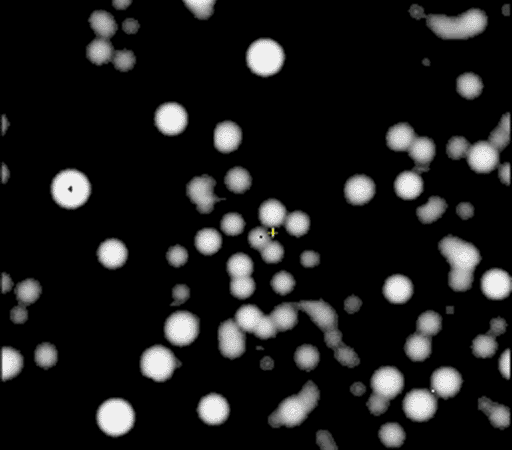
|
Credit & Copyright: A. Eckart
(U. Koeln) &
R. Genzel
(MPE-Garching),
SHARP I,
NTT,
La Silla Obs.,
ESO
Explanation:
Why are these stars moving so fast?
Shown above is a time-lapse movie in
infrared light detailing how stars in the central light-year of
our Galaxy
have moved over the past eight years.
The yellow mark at the image center represents the
location of a peculiar
radio
source named
Sgr A*.
If these fast stars are held to the
Galactic Center by gravity,
then the central object exerting this
gravity must be both compact and massive.
Analysis of the
stellar motions indicates that over
one million times the mass of our
Sun is somehow confined to a region
less than a fifth of a light-year across.
Astronomers interpret
these observations as strong evidence that the
center of our Galaxy
is home to a very massive
black hole.
|
January February March April May June July August September October November December |
| ||||||||||||||||||||||||||||||||||||||||||||||||
NASA Web Site Statements, Warnings, and Disclaimers
NASA Official: Jay Norris. Specific rights apply.
A service of: LHEA at NASA / GSFC
& Michigan Tech. U.
Based on Astronomy Picture
Of the Day
Publications with keywords: black hole - Galactic Center - Sgr A
Publications with words: black hole - Galactic Center - Sgr A
See also:
- APOD: 2025 December 3 Á Visualization: Near a Black Hole and Disk
- APOD: 2025 September 24 Á GW250114: Rotating Black Holes Collide
- APOD: 2025 May 9 Á IXPE Explores a Black Hole Jet
- APOD: 2025 May 6 Á The Doubly Warped World of Binary Black Holes
- APOD: 2025 May 4 Á Spin up of a Supermassive Black Hole
- APOD: 2025 April 14 Á The Galactic Center in Radio from MeerKAT
- APOD: 2024 November 24 Á Journey to the Center of the Galaxy
